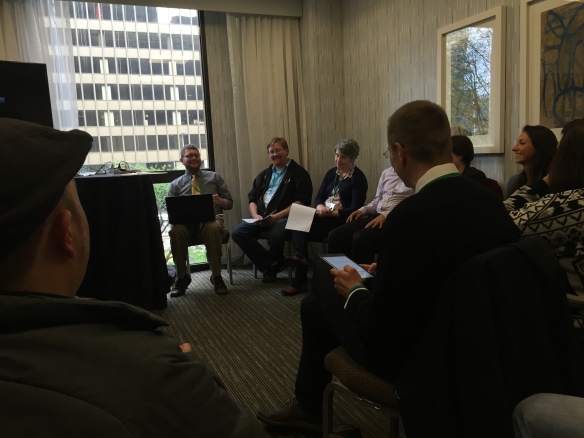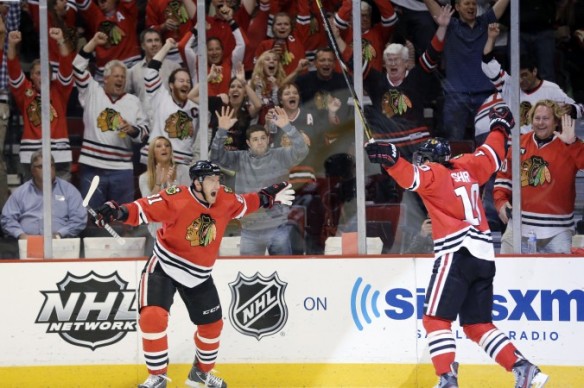Here’s a quick update to what I’ve been up to so far this summer. If you have any questions about the status or background of anything I may have not explained thoroughly enough, please send me an email.
POSTCARD BOOK REVIEW

via UI Press
I am currently reading this neat book about the “golden age” of postcards (I hadn’t realized that was a thing) from Illinois by John Jakle and Keith Sculle in order to review it for the journal Material Cultures. I’ve always been fascinated with the shifting discourse on depictions of place throughout the years, especially given how integral postcards have been in these constructions of twentieth century America. I’ve posted a few items about vintage postcards on this site, but Jakle and Sculle take that analysis to the next level with the book. From what I’ve read so far, they aim to juxtapose the images of pre-Depression Chicago with that of rural Southern Illinois, arguing that the two were light years apart ideologically, yet inextricably tied together via the icons of industry. I’m pretty excited to learn more about the Chicago of that era. I might argue that few world cities are more interwoven with the “Roaring 20’s” mentality and urban blue-collar America, even to this day. I love that city, and I can’t wait to visit it next year for the AAG Meeting. Who wants to join me at the Oakwood at 3:30 AM? I really hope that place is still around. Anyway, I apologize in advance for getting sentimental about my visits there. No apologies for rooting against the Blackhawks in the Western Final, though. I still have a soft spot for the Kings after those two years in Long Beach. Now that I think about it, I’m grateful to not be at the Oakwood while I write this.
PAPER ON THE USE OF THE S.W.O.T. ANALYSIS IN PEDAGOGY
I have been fortunate to collaborate with Dr. Ronald Kalafsky to be second-author on a groundbreaking work he has been piecing together on our GEO 451 – The Global Economy course. For those unfamiliar (which I was before TA’ing this course, with no real foundation in macro-economics), the S.W.O.T. Analysis is an analytic paradigm that companies use to evaluate locations before investing resources. It stands for Strengths, Weaknesses, Opportunities, and Threats. It was an interesting experience, especially since many of our students had never participated in a SWOT Analysis before, and should hopefully be interesting for anyone involved in the overlap between economics, geography, and teaching. More updates on this as it develops, but for now the research seems to be in good hands with Ron.
CHAPTER ON THE NEW ECONOMICS OF MUSIC

Wombleton, the best British record shop from the 1960s that happens to be in Highland Park, Los Angeles (Timeout LA)
At AAG 2013 in LA, I participated in a panel that Brian Hracs (Upsalla University) organized about the “New economics of the music industry.” Well he recently announced that he will be turning several of the papers presented into a published book about new approaches to studying the confluence of place, music, and money. My chapter is currently titled “Emotional Landscapes and the Evolution of Vinyl Record Retail: A Case Study of Highland Park, Los Angeles.” I still have a lot of revision to do, but my argument is, as my Master’s Thesis argued, that relying on consumers’ emotional attachment to places (both concrete and imagined) is a key component in operating a physical music retailer today. While artists do their part in luring listeners in with iconic cover art that evokes place, the retailers are doing the same, and three businesses I got to know in Highland Park (one of my favorite places in all of Los Angeles) were perfect examples. Stay tuned for more details about this one.
“HEY CHUCK! IT’S YOUR COUSIN, MARVIN BERRY! YOU KNOW THAT NEW SOUND YOU’VE BEEN LOOKING FOR? WELL LISTEN TO THIS!”

“Watch me for the changes and try to keep up…”
I don’t think I can leverage that as a title for the chapter, but I’m going to begin a chapter on the soundscapes of Hill Valley, CA. How exactly does the diegetic sounds (specifically, the music) in Back to the Future formulate our perceived landscape of Marty McFly’s hometown? We’ve had this project in the works for well over a year now, and we’re excited to see if slowly kicking into motion over this fall. I’m very excited to have a “Back to the Future” panel at AAG 2015 (naturally) featuring a number of the chapter authors in “Save the Clocktower! Imagined Geographies of Hill Valley 1885 – 2015.”
I’ve been getting more emails from interested writers for the project, and I’m still anxious to see what materializes over the next year. Ideally, I’ll get my own drafts done before long (including an introduction for the book with my good friend Teresa Anderson-Sharma), since I’m going to be teaching GEO 101 in the Fall here in Knoxville. A busy time, but I’d never get anything done if I didn’t stress myself out from time to time.
THE ERGS! on One Week // One Band

Philly, 2008
This one doesn’t have as much to do with Geography, but it’s nonetheless great for anybody interested in my music writing. I’m very excited to be contributing a week’s worth of entries on the kings of Jersey dork-pop for the great site One Week // One Band over the week of June 23rd. I wish I spent more time in New Jersey so I had more to write about their humble middle class middle-NJ origins… wait, no I don’t. But if there’s one positive thing New Jersey has given us by the boatload over the past few decades, it’s been great music. Perhaps no band has encapsulated the pissed off turn-of-the-century zeitgeist with as much humor as The Ergs! did. They stopped playing formally in 2008, all three members are still very musically active (Jeff in Black Wine, Joe in Night Birds, and Mike in every band that isn’t those two) and their legacy is growing.
So…. that’s what you can find me up to this summer. I’m also on board with your bike ride around the Knoxville area or spontaneous regional road trip. If I don’t see you around, I hope you have a great break, too and get out enough. See you back here soon.







 “…the ambivalence of the stranger thus represented the ambivalence of the modern world…” (Jacques Derrida, quoted by David B. Clarke in The Cinematic City).
“…the ambivalence of the stranger thus represented the ambivalence of the modern world…” (Jacques Derrida, quoted by David B. Clarke in The Cinematic City). It’s AAG 2015, meaning it’s time for some discussion on everyone favorite time-travel film franchise, “Back to the Future!” I’m very excited to finally have all of the contributors to Save the Clocktower (RJ Rowley, Chris Dando, Richard Waugh, Greg Pagett, Lydia Hou, Julian Barr, Ashley Allen, Stacie Townsend, and more) in one room to introduce their chapters and discuss the overall contributions that Marty McFly, Doc Brown, and their fictional town of Hill Valley still have to contribute to geography. This will help formulate an introduction to the book in honor of the film’s 30th anniversary as well as Doc, Marty, and Jennifers’
It’s AAG 2015, meaning it’s time for some discussion on everyone favorite time-travel film franchise, “Back to the Future!” I’m very excited to finally have all of the contributors to Save the Clocktower (RJ Rowley, Chris Dando, Richard Waugh, Greg Pagett, Lydia Hou, Julian Barr, Ashley Allen, Stacie Townsend, and more) in one room to introduce their chapters and discuss the overall contributions that Marty McFly, Doc Brown, and their fictional town of Hill Valley still have to contribute to geography. This will help formulate an introduction to the book in honor of the film’s 30th anniversary as well as Doc, Marty, and Jennifers’ 





 I didn’t completely realize it as a teenager, but the Back to the Future trilogy was a worldwide phenomenon. As Fox mentioned in an interview on a documentary included with the trilogy’s
I didn’t completely realize it as a teenager, but the Back to the Future trilogy was a worldwide phenomenon. As Fox mentioned in an interview on a documentary included with the trilogy’s 
 This collection will cover diverse topics including (but not limited to; the list keeps growing): emotional and gender-based geographies of “rhythmic ceremonial rituals” (dance), geopolitical conceptions of the story (Libyan nationals on US soil), the evolution of the subdivision (Lyon Estates), the international consumption of the trilogy (Fox once got called “Marty McFly” by a pack of monks in Bhutan), and the course of urban planning surrounding the town’s iconic clock tower.
This collection will cover diverse topics including (but not limited to; the list keeps growing): emotional and gender-based geographies of “rhythmic ceremonial rituals” (dance), geopolitical conceptions of the story (Libyan nationals on US soil), the evolution of the subdivision (Lyon Estates), the international consumption of the trilogy (Fox once got called “Marty McFly” by a pack of monks in Bhutan), and the course of urban planning surrounding the town’s iconic clock tower. In the meantime, please follow us on
In the meantime, please follow us on